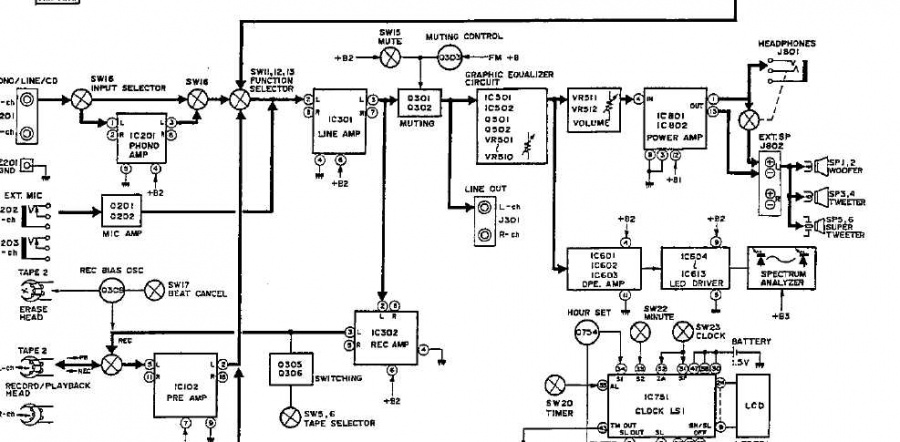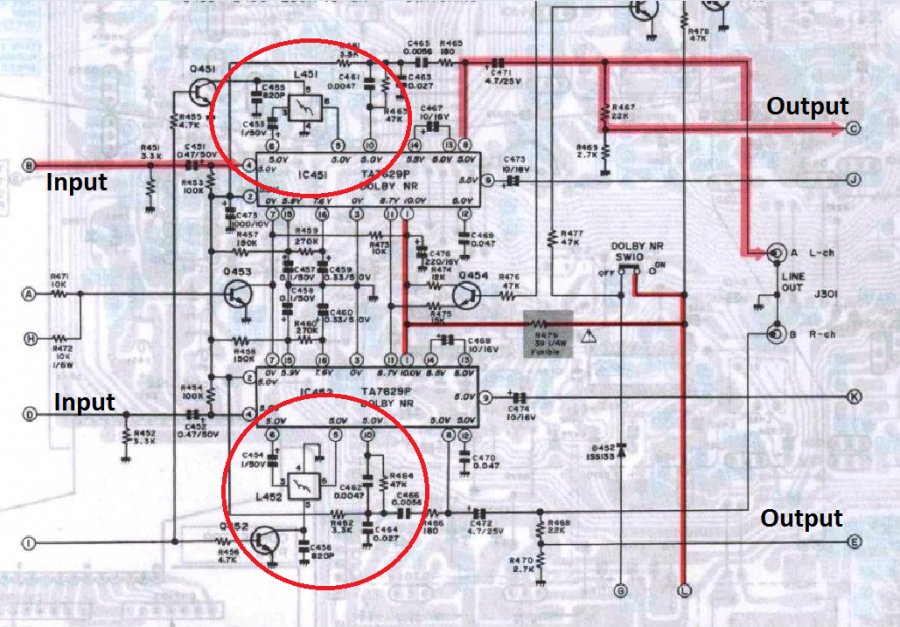Hey Guys,
I have this beater of a Sharp WF-940 (939 with Dolby). It's a personal 'grail' of mine, so I really want to get it working, and they're selling for big $ on eBay, so can't get another cheaply.
When I got it, it had sustained water damage, had a dead channel, no FM, no tape.
Inside was dry-joint central. I've touched up a lot of solder joints and replaced suspect capacitors. FM is now working, one channel is STILL NOT WORKING!!!
So frustrated, I've tried swapping amp ICs, equaliser ICs, equaliser transistors to no avail.
Power amp is definitely working, I can hear hiss from the dud channel, and if I turn the volume up full on the dead channel, I can softly hear the bass of the music... but perhaps this is just crosstalk in the main amplifier?
Here is a block diagram...

Preamp must be working, as when I connect a device to the line-out, both channels are working. Spectrum also only shows a reading for an input from the working channel.
Apart from dry solder joints, is there anything I could've missed?
I have this beater of a Sharp WF-940 (939 with Dolby). It's a personal 'grail' of mine, so I really want to get it working, and they're selling for big $ on eBay, so can't get another cheaply.
When I got it, it had sustained water damage, had a dead channel, no FM, no tape.
Inside was dry-joint central. I've touched up a lot of solder joints and replaced suspect capacitors. FM is now working, one channel is STILL NOT WORKING!!!
So frustrated, I've tried swapping amp ICs, equaliser ICs, equaliser transistors to no avail.
Power amp is definitely working, I can hear hiss from the dud channel, and if I turn the volume up full on the dead channel, I can softly hear the bass of the music... but perhaps this is just crosstalk in the main amplifier?
Here is a block diagram...

Preamp must be working, as when I connect a device to the line-out, both channels are working. Spectrum also only shows a reading for an input from the working channel.
Apart from dry solder joints, is there anything I could've missed?


